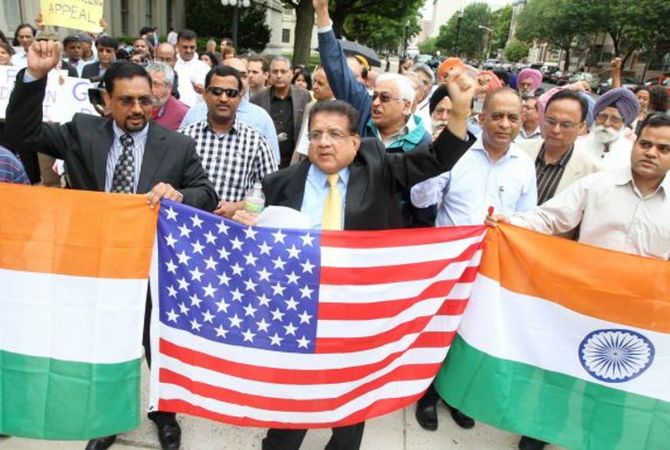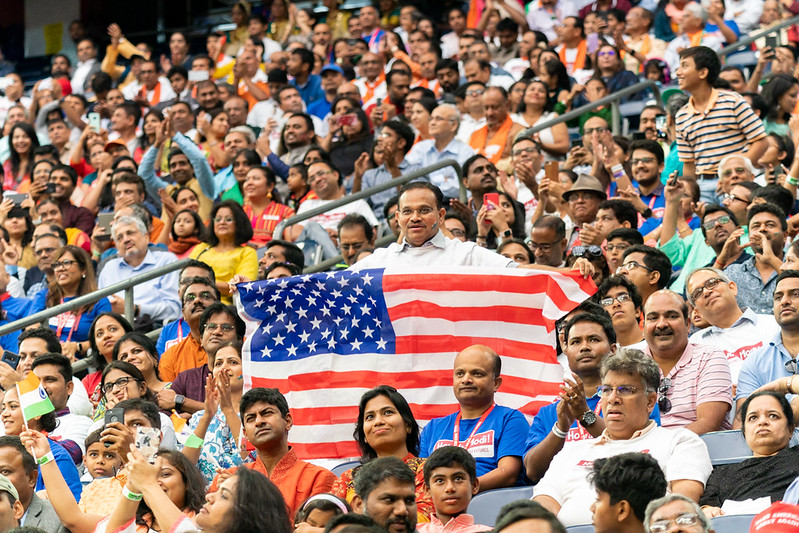From Silicon Valley startups to leading medical institutions, Indian immigrants began to leave their mark, their contributions reflecting their ambition and drive.
In an ever-evolving global landscape, the recent state visit of Indian Prime Minister Narendra Modi to the United States stands as a significant milestone, marking the strengthening bonds between two of the world’s largest democracies. This visit, hailed as a turning point in India-US relations, has not only fortified the strategic partnership between the two nations but also highlighted the substantial contributions of the Indian diaspora to American society. Prime Minister Modi, during his visit, praised the Indian diaspora as India’s “strength,” emphasizing their crucial role in the US economy and society. This acknowledgment from one of the world’s most influential leaders is a testament to the remarkable journey of Indian Americans.

The narrative of Indian Americans is a saga that began over a century ago, a story of dreams, aspirations, and the quest for a better life. The first wave of Indian immigrants arrived on American shores in the late 19th and early 20th centuries, primarily as agricultural workers in California’s fertile farmlands. These pioneers embarked on a journey spanning thousands of miles, leaving behind the familiarity of their homeland for the promise of the American dream.
However, this journey was far from smooth. The early immigrants faced numerous challenges, from the harsh realities of manual labor to the sting of racial discrimination. Yet, they persevered, their resilience echoing in the fields they tilled and the communities they built.

The Immigration and Nationality Act of 1965 marked a significant turning point in the history of Indian immigration. The Act, which abolished the national origins quota, paved the way for a new wave of Indian immigrants, primarily highly skilled professionals, including doctors, engineers, and scientists. This influx of talent from India played a pivotal role in shaping the American technological and medical landscape. From Silicon Valley startups to leading medical institutions, Indian immigrants began to leave their mark, their contributions reflecting their ambition and drive.
Indian Americans, now numbering an estimated 4.4 million, have emerged as the second-largest Asian American group in the country. The majority of Indian Americans are Hindu (72%), followed by Muslim and Christian populations. But it’s not just their numbers that command attention; it’s the remarkable strides they’ve made in education, income, and professional fields that truly set them apart.
Education is a cornerstone of the Indian American community, with an impressive 73% holding a bachelor’s degree or higher. This figure stands in stark contrast to the national average of 33%, underscoring the community’s deep-rooted emphasis on academic excellence. This pursuit of knowledge extends into their professional lives, with one in four Indian Americans making their mark in the STEM fields – science, technology, engineering, or mathematics. Achieving remarkable accomplishments, they have risen to leadership positions in some of the world’s most eminent companies. Their ingenuity, innovation, and steadfast work ethic have propelled them to the forefront of their industries, making them highly respected and influential figures.
Indian Americans are not just employees or professionals; they are business owners, innovators, and job creators. With an estimated 1.2 million businesses under their belt, Indian Americans are making a significant impact on the U.S. economy. These businesses, spanning across various sectors, generate an estimated $1 trillion in annual revenue.
A striking example of this entrepreneurial success can be seen in the hospitality industry. According to a report by the Asian American Hotel Owners Association (AAHOA), Indian Americans own more than 40% of all hotels and motels in the United States. This includes approximately 20,000 properties, a testament to their significant presence in this industry. The rise of Indian Americans in the US motel industry has been so remarkable that it has given birth to a playful moniker, the “Patel Motel Cartel.”
Indian Americans have made substantial strides in the political arena. Several notable figures have achieved unprecedented success, inspiring millions within the Indian American community. This rise is a testament to the assimilation of Indian Americans into American society, without losing their unique identity or heritage. It’s a testament to the American public’s growing acceptance of the role Indian Americans play in the progress of America.
The rise of Indian Americans in the US political landscape is powerfully exemplified by Vivek Ramaswamy. An entrepreneur and author, Ramaswamy has made a significant leap into politics as a Republican candidate for the 2024 US presidential elections. Despite facing challenges, including an attack on his Hindu faith, Ramaswamy has garnered cross-party support, underlining the growing acceptance of Indian Americans in politics.
Ramaswamy’s campaign is gaining traction, with him currently ranking third in the national primary field according to the FiveThirtyEight polling aggregate. His active campaigning and media presence have made him a prominent figure in the Republican presidential primary, reflecting the increasing influence of Indian Americans in American politics.
As we look to the future, the Indian American community continues to grow, evolve, and make their mark. Their journey is a testament to the fact that America’s strength lies in its diversity, and its acceptance of Indian-Americans enriches the nation. The story of Indian Americans is not just their story; it’s an integral part of the American narrative.
